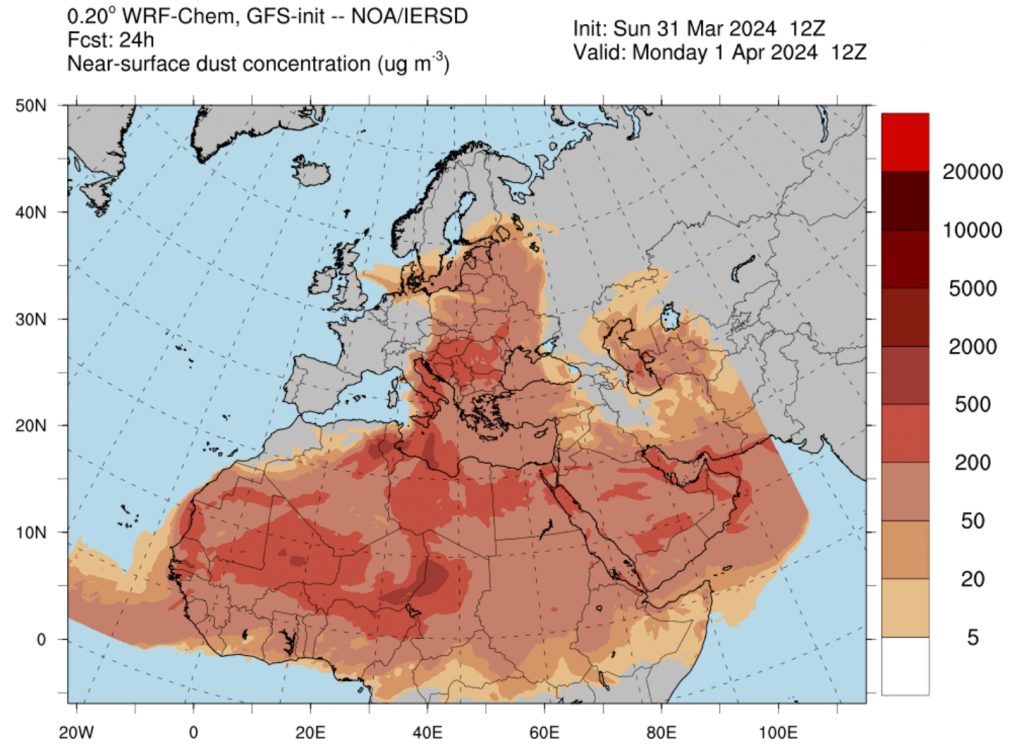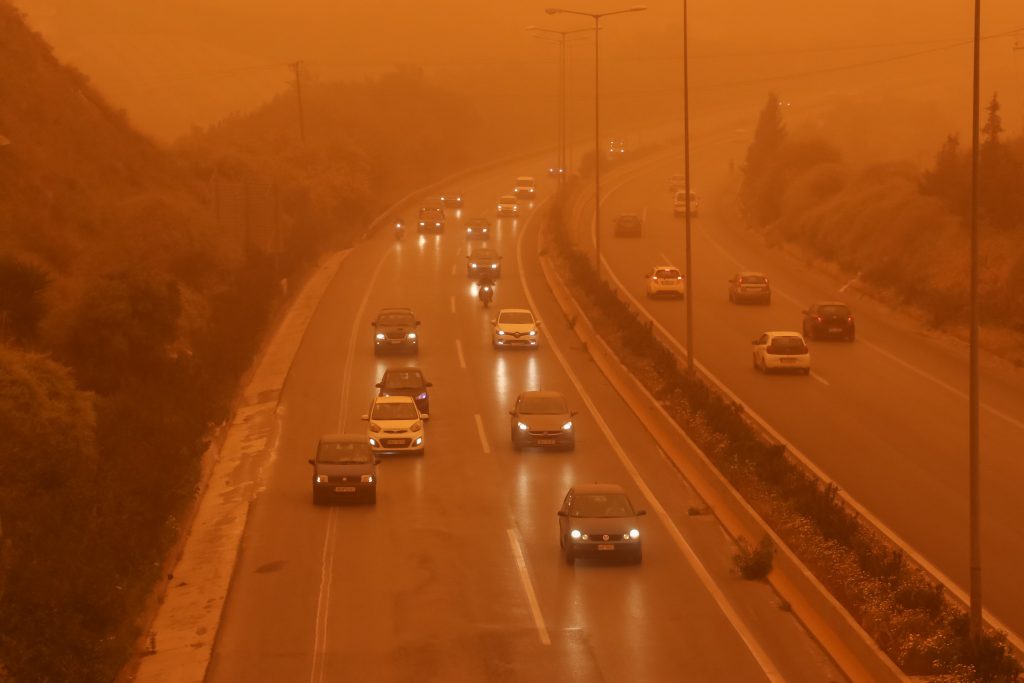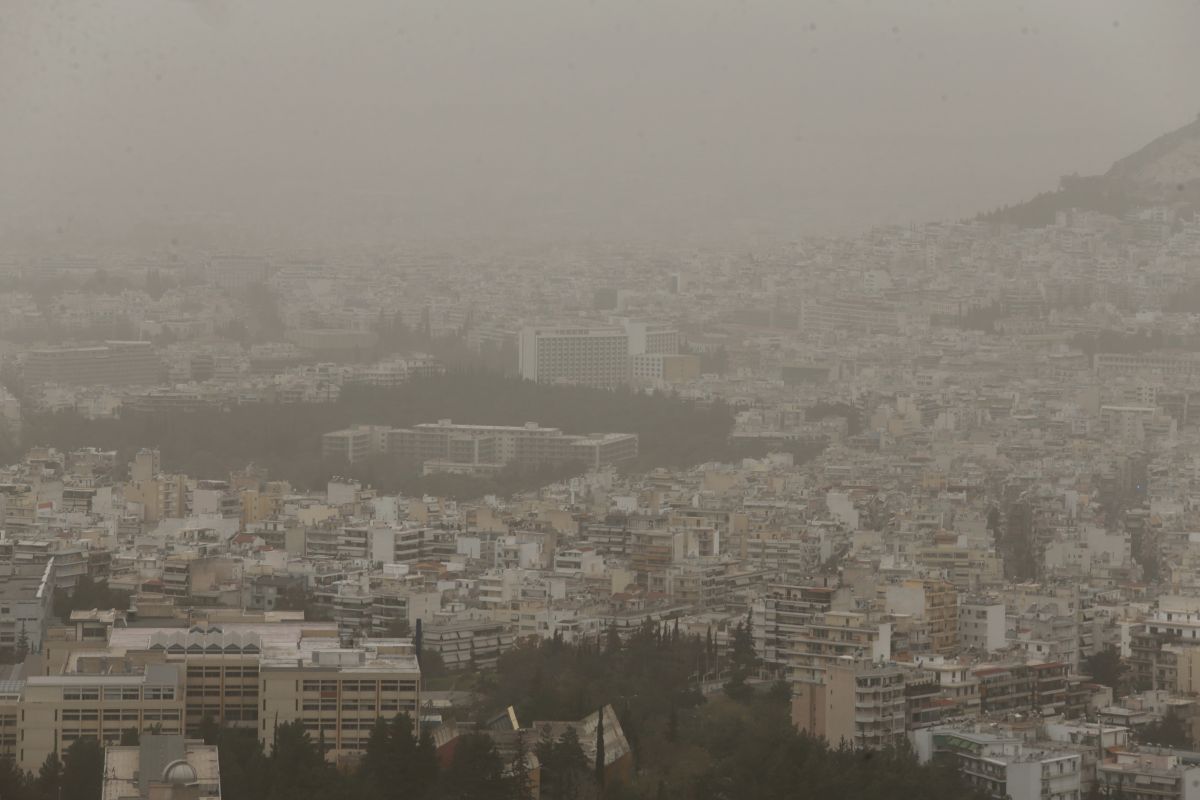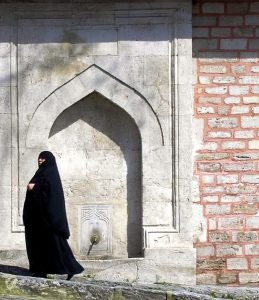Half of Europe, much of Africa and parts of Asia are covered by the sands of the African Sahara Desert, and forecasters say Greece should expect the sands to come and go until the end of May.
Dust Levels in Athens
Although hot and sunny in Athens, the sky has an overcast and yellowish hue on account of the sands.
And according to the National Observatory of Athens (NOA), the pollution has been reaching dangerous levels.
The President of the Physics Department of the University of Para and Director of the Atmospheric Physics Laboratory Andreas Kazantzidis told AMNA that the sands are carried by seasonal winds, but last week the dust concentration levels were very high for a period of three days.
The World Health Organization (WHO) says that the air particulate matter (PM10) should not exceed the limit of 50mg/m3 more than 35 times per year, and last week PM10 levels were over 65 mg/m3, said Kazantzidis.

Health Risks
The World Health Organization (WHO) cautions that the dust may indeed be harmful to your health. The Center for Disease Control and Prevention (CDC) explains that the dust is a type of particulate matter that is blown for thousands of miles, travelling even to the southern United States June-August.
The particles can be breathed in and enter a person’s lungs and blood stream, even triggering asthma attacks and problems in people with pre-existing respiratory conditions. Larger particles may irritate the eyes and skin.
Staying Healthy During Saharan Dust Season
The CDC encourages people with respiratory problems to take precautions when stepping outside. It is important to monitor air pollution levels through local air quality indexes and to avoid intensive activities outdoors which require you to breath hard (such as running).
You can monitor air quality levels in Greece at the Real-time Air Quality Index Visual Map found here.




